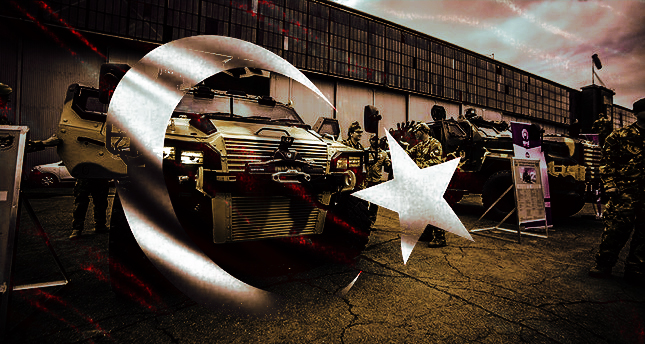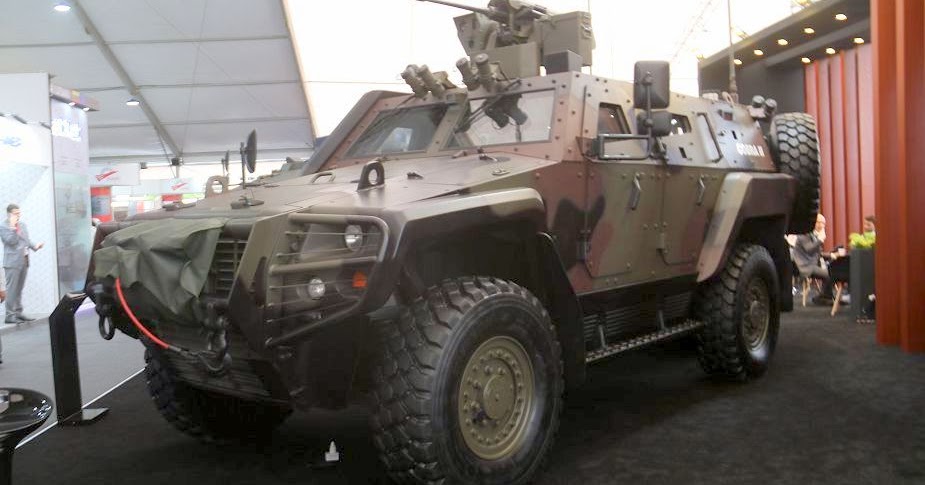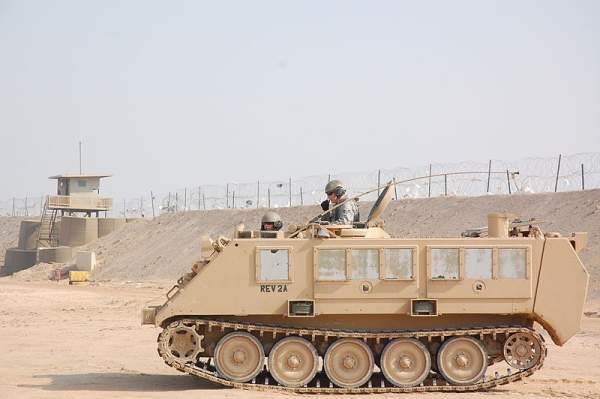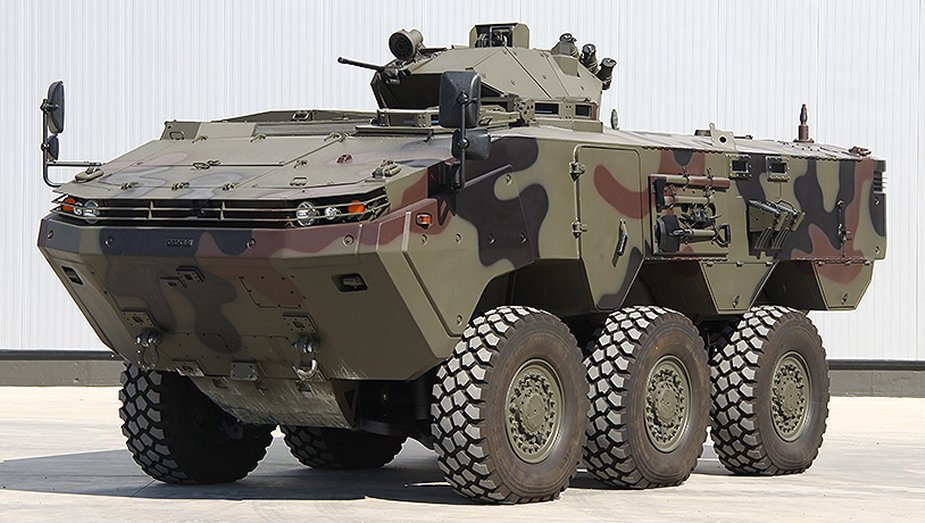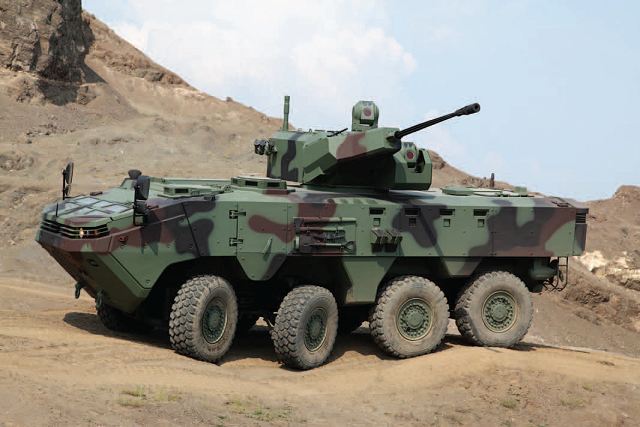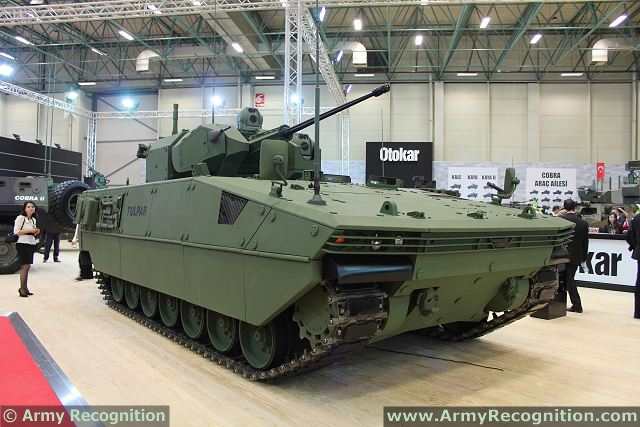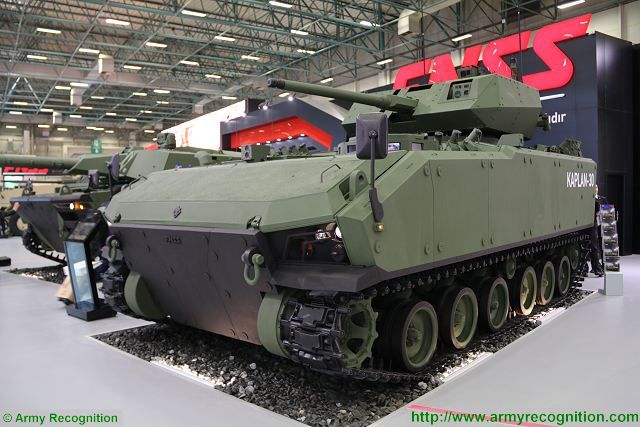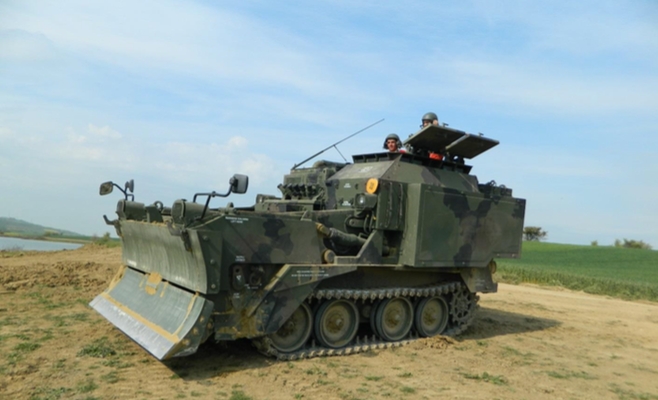On January 23rd, SF released a video providing a look at battle tanks of the Turkish Army and their modernization. The text below provides a closer look at armored fighting vehicles of the Turkish Army (Ground Forces).
The main armored combat vehicles in the Turkish Army’s ground forces are the M-113 armored personnel carrier (APC) and the Cobra infantry mobility vehicle in various modifications.
Active work is being carried out to upgrade the vehicles currently in use by the Ground Forces. The goal is to extend their service life and level of modernization. This is generally done in regard to developing unmanned turrets with 25-30 mm automatic guns.
Particular attention is also given to providing more space inside the vehicles, in order to allow for the deployment of more troops. This is also required when it comes to airborne deployments, when the focus is on bringing more troops, or smaller remotely controlled ground vehicles or small-scale UAV.
Thus, in the future it can be expected that the ammunition will not be placed in flexible belts inside the armored infantry fighting vehicle, but in the unmanned turrets, which would allow the removal of the entire set of weapons outside the vehicle’s hull, where the crew and the landing force are located.
Development on changing the functional purpose of light- and medium-weight armored fighting vehicles is also actively on-going. This functional change is almost entirely owed to the transition to a quick-change module installation of weapons on a sort of turntable with the introduction of various programs into the fire control system and automatic change of indication in the sights in such a way that the armored troop-carrier can arm itself depending on the battle conditions. The modularity of the design will ensure the adaptation of its chassis for various weapons. This will allow to create vehicles with multiple functions on a single universal platform.
For example, as part of the modernization of the Arma armored fighting vehicle, it is planned to equip it with the “Mizrak-30” unmanned turret.
The “Mizrak-30” turret, designed for installation on the Arma armored fighting vehicle, has a bulletproof and anti-shatter armor. The main gun, ammunition boxes, guidance equipment and sighting systems are located inside the armored body.
The turret can be equipped with various weapons of 25-50 mm caliber.
https://youtu.be/G9MVTFj-r28
The turret houses a control unit for monitoring and controlling weapons, and a video camera, a thermal imager and a laser range finder are mounted on a common stable platform. Information from this equipment is transmitted to the control panel located at the station of the gunner-operator.
If necessary, an additional platform with surveillance devices can be installed on the roof of the tower.
On the right side side of the turret there are mounts for installing a transport and launch container with the Lumtas anti-tank guided missile, and in the future the mounts will also be used to accommodate a single-use, small UAV.
At the first stage of operation, the capabilities of this device will be limited by entirely visual reconnaissance, but in the future it is expected to equip the UAV with laser target illumination, which will allow the use of guided ammunition with a laser homing head.
In order to increase reconnaissance capabilities, it is planned to equip the armored fighting vehicle with a retractable mast with a combined system of optoelectronic surveillance devices (optical devices, laser rangefinders, thermal imaging and television devices) located on it.
The Turkish companies FNSS and Otokar have developed several families of fighting vehicles. FNSS – the armored fighting vehicles Pars and Kaplan. Otokar – Arma and Tulpar. The families of armored fighting vehicles Pars and Arma have 4 × 4, 6 × 6 and 8 × 8 wheel drive.
When designing the vehicles, quite a bit of emphasis falls on ensuring dimensional and constructive unification of the units, which would allow them to be modular. The armored fighting vehicle families are produced in the following versions: infantry fighting vehicle, armored personnel carrier, combat reconnaissance vehicle, self-propelled howitzer, armored recovery vehicle, and armored medical evacuation vehicle.
A feature of the new wheeled fighting armored vehicles is the presence in their design of electric transmissions with a traction electric motor in the wheel of the car (the so-called motor-wheel).
This increases the controllability and maneuverability of the vehicle. With the introduction of a system of simultaneous steering of all wheels using built-in individual electric mechanisms for turning the wheel, it becomes possible to exclude steering from the hydraulic system.
In addition, the presence of electric transmissions on wheeled armored fighting vehicles ensures the fulfillment of the following requirements:
- there is no longer a need in the the design for a mechanical transmission system in the form of gearboxes, angle gears, transfer boxes, final drives, wheel gears and driveshafts;
- weight reduction and increase in carrying capacity of the machine with equal overall characteristics with existing samples;
- placement of additional sources of electricity.
So, the useful volume freed from the mechanical transmission units made it possible to place additional power sources and increase the vehicle’s resistance against mines and IEDS.
The Tulpar and Kaplan tracked armored fighting vehicle families are being developed to replace the existing ACV M-113 armored fighting vehicles of various modifications.
Despite the similarity of the main performance characteristics, the vehicles have some significant differences.
For example, the Tulpar armored fighting vehicle is a multifunctional platform weighing from 32 to 45 tons, depending on the degree of protection, where its two options are provided (options “A” and “C”), which can vary depending on environmental conditions.
The armored fighting vehicle is equipped with a remotely controlled combat module with a 30-mm automatic gun. The ammunition load of the cannon is 400 shells (200 are already in the feed tapes, and another 200 are in the laying, in front of the hull immediately behind the engine).
Variant “A” – the combat weight of the machine is 32 tons, which makes it possible to transfer it by air using A400M transport aircraft. The armored hull guarantees protection against bullets of large-caliber machine guns and sniper rifles of caliber up to 14.5 mm from every direction, as well as from artillery shell fragments. The armor further protects from against 30-mm shells of automatic guns and hand-held anti-tank grenade launchers, but only from the front.
Variant “C” – has an increase protection level, compared to option “A”, which makes the the combat weight of the vehicle 45 tons. It is turned into this option by adding special armored modules that are installed both on the frontal parts of the body and turret, as well as on-board and stern, as well as on the roof of the body. If any of the modules is damaged, it can be replaced in the field.
The crew and systems are protected from 30-mm sub-caliber projectiles of automatic guns and hand-held anti-tank grenade launchers not only from the front, but also from the sides.
In contrast to the Tulpar, during the creation of the Kaplan armored fighting vehicle, the main efforts of the developers were aimed at increasing its amphibious capabilities, and the requirements for vehicles of this class were taken into account, namely:
- the ability to transport up to eight foot soldiers in combat gear as an airborne squad;
- moving through water at a speed of at least 10 km/h;
- the ability to conduct joint combat operations with a mechanized group during long-term operations on the shore in all types of terrain;
- the possibility of defeating highly protected enemy targets and infantry;
- informational interaction with the infantry squad and target detection at maximum range;
- ensuring the protection of the crew and troops from fire of 30-mm automatic cannons, hand-held anti-tank grenade launchers and fragments of artillery shells and mines, as well as from the damaging factors of weapons of mass destruction;
- the interconnection of reconnaissance, command and communication facilities with the automated tactical command and control system, as well as the reliability of all systems under conditions of operations at sea and on land.
The main production of these armored fighting vehicles for them to exported, however, in the period until 2023, it is expected for up to 1,000 to be purchased for the Turkish Armed Forces.
Simultaneously with the creation of armored fighting vehicles, research is being conducted on the development of support equipment. An example is the AACE (Armored Amphibious Combat Earthmover) floating digger.
The AACE product is an amphibious armored tracked vehicle designed to prepare the banks of the river and other reservoirs for the entry of military vehicles into the water during the crossing of water obstacles.
A key characteristic of the AACE is its ability to perform heavy bulldozer work at a depth of 1 m by means of adjustable hydraulic equipment. Essentially, this is an armored floating bulldozer machine.
In addition, work is underway to create unmanned ground vehicles (UGV), which in the short-term will perform the functions of combat support: conducting reconnaissance, searching for mines and improvised explosive devices, carrying out continuous transport of ammunition and other equipment to the front line.
Subsequently, when the problem of automating the movement of robots in conditions of a previously unknown rough terrain is solved, the functions of the UGV can be expanded to carry out combat missions offline.
Turkey has the second largest army in NATO, and it is also one of the key powers in the Middle East. It needs to pay attention, and evidently does so, to modernizing its military forces in order to guarantee its national security, as well as to defend and forward its interests in the region.
MORE ON THE TOPIC:



